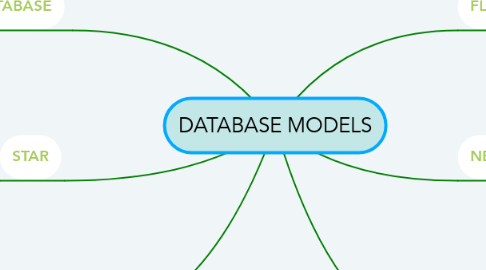
1. FLAT FILE
1.1. Stores data in a plain text file with fields separated by delimiters. Cannot contain multiple tables.
1.1.1. Flat file databases are used by various applications to store data related to configuration.
2. NETWORK
2.1. Multiple records can be linked to multiple owner files and vice versa. The model is structured similar to an upside down tree. A single element can point to multiple data elements. Many to Many relationships.
2.1.1. The model allows one record to have multiple parent and child records. It allows for a more natural modeling of relationships between records or entities.
3. HIERARCHICAL DATABASE
3.1. Similar to a network database, it uses a tree structure but uses a One to Many relationship.
3.1.1. This model is not very versatile and is confined to specific uses. The model was popular in early database design. Some IBM and Microsoft Models are still in use.
4. STAR
4.1. A data warehousing model where one table references multiple dimension tables in a diagram that looks like a star.
4.1.1. It is the simplest form of a dimensional model. This model is used for querying large data sets and is generally used in warehouses.
5. RELATIONAL
5.1. Collective set of multiple data sets organised by tables, records and columns.
5.1.1. Uses SQL to interact with database. Uses relationships such as one-to-one, one-to-many and many-to-many. Many enterprises and organisations make use of relational databases.
5.1.1.1. New data can be added without disrupting existing data.
6. OBJECT ORIENETED
6.1. A database that has information represented by objects. Objects reference the ability to develop a product, define and name it.
6.1.1. Examples of this model includes Smalltalk and Cache.

